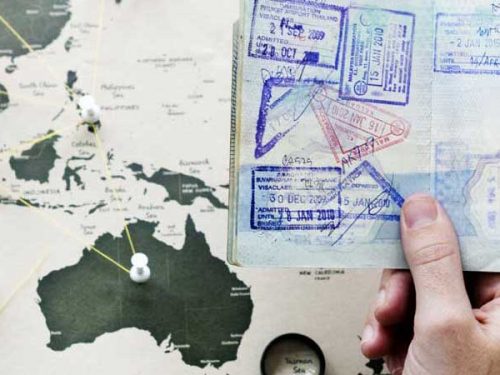Does It Seem Like Every Time You Turn Around, A Diver Is Talking About Raja Ampat?
Social media is all over this destination too. This Indonesian archipelago is all the rage right now, and for good reason.
The startlingly beautiful islands of Raja Ampat in Indonesia form an idyllic chain through the clear, turquoise ocean, rising in vivid green points of dense tropical foliage above the waves. They sit in the very heart of the Coral Triangle, a well-named area of tropical water that connects Indonesia with Malaysia, Papua New Guinea, Timor-Leste, the Solomon Islands, and the green limestone atolls of the Philippines. The marine life here is remarkably diverse, and the exceptionally clear waters and great visibility offer excellent opportunities to explore brightly coloured reefs, and take the perfect underwater photographs. Although there are lots of tiny atolls here, well over 1500 or so, there are four main islands in the Raja Ampat chain, which can be translated as ‘The Four Kings’. They’re certainly regal, and each hold appeal for very different reasons. Waigeo is renowned for its dramatic karst-formed cliffs that drop sharply into the sea, while Misool has some unique rock paintings dating back thousands of years. Salawati has particularly beautiful beaches fringed by waving palm trees, and Batanta is home to an impressive collection of wild mammals, from indigenous wild boar, to some very unusual species of bat. Getting here is an adventure in itself. The nearest international airport is at Sorong in the West Papua province, and after you land it’s onto a ferry to Waisai, unless your resort runs their own shuttle service.
Beneath the waves that surround these beautiful, but isolated islands, the nutrient-rich waters attract a formidable group of marine life that’s widely considered to be some of the most dense and diverse of all the Indonesian waters. Black Tip Reef sharks glide effortlessly through the deep, Wobbegong sharks are occasional visitors, and pelagic fish, from the Giant Trevally to the Dogtooth Tunafish pass through here in great numbers. Manta Ridge is a particularly popular dive site, and it’s aptly named. It’s located in the deep waters between Mnsuar and Airbore iIslands, where the blue waters are filled with graceful Manta Rays gliding effortless between the rocky ridges in the reef. Cross Wreck is another popular dive site suitable for experienced divers. It’s a long-sunken Japanese patrol boat, still equipped with depth charges, lamps and other deck furniture. You can get access to parts of the ship, including the engine room, and part of the hold, but you might have to avoid darting shoals of humphead parrotfish, or the angry stripes of solitary lionfish as you go.
What makes Raja Ampat so popular is the variety of dive types you can experience. Variable currents provide excellent opportunities for drift diving, and with depths that typically range between 10 to 40 metres there’s a dive suitable for all abilities. Plus, with a year round water temperature that averages 28°C, every month is a good month to dive. The islands might be remote, but they’re not without their tourist facilities, and along the pretty coastal routes and idyllic powdery beaches, luxury hotels and friendly dive resorts offer the perfect place to rest inbetween descents. To truly explore the secret inlets and shallow bays that dot their way through this archipelago, many divers opt for liveaboard holidays that offer the chance to spend weeks here at a time, discovering the most intimate delights of the Raja Ampat dive sites, and its spectacular island peaks.
Check here for more information about Indonesia, including resorts and liveaboards in Raja Ampat







